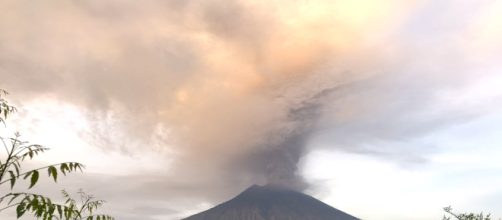According to many scientists such as Piers Corbyn, David Dilley, John L Casey, Dr. Habibullo Abdussamatov, Ben Davidson, and many more, it is not global warming that we need to be concerned with, it is Global Cooling -- perhaps even a mini-Ice Age. If that isn't bad enough, they also say to expect an uptick in volcanic activity. Why should we take their word for it? Because we are talking about scientists who have a proven track record of long-term weather forecastings such as Piers Corbyn, who has an 80 percent accuracy rating, and David Dilley, who had a long career with NOAA.
When it comes to science it is the success of the predictions of a model that determines its validity, and so far the predictions of the IPCC and its political mouthpieces have largely failed. Temperatures have not kept up with the increases in atmospheric carbon dioxide as their model claims should happen. The ice caps have not disappeared, Prince Charles' warning of 100 months did not come to fruition, wet warm winters did not happen, and the list goes on. These failed predictions are what one can expect from science driven by a political agenda such as that of the Intergovernmental Panel on Climate Change.
The grand solar minimum
Meanwhile, the model which is based on solar activity these dissenting scientists use for long-term weather forecasting is predominantly successful, and as such lends credibility to their arguments.
Their model disputes the concept of man-made climate change for a driving force that is many magnitudes greater than all of humanity, than all of the Earth, and that is the sun. There are ample historical records that show a correlation between sunspot activity and the Earth's climate and that the last two ice ages were both preceded by a similar grand solar minimum as we are experiencing now.
These are known as the Maunder Minimum (1600) and the Dalton Minimum (1815) and during these rapid cooling cycles, the temperatures around the world plummeted, as it is expected that our present temperatures will plummet to lows not seen in our lifetime. Considering the number of cold temperature records broken this winter of 2017-18, snow in the Sahara two years in a row, a frozen Bay of Fundy, sharks freezing, as well as lizards dropping from their perches, we may well be on our way.
The grand solar minimum is when the sun's energy output drops, it is the sun's energy that powers Earth's magnetosphere, which, over the past century, has weakened by twenty percent. At the same time the magnetic north pole has been wandering and the last survey found it to be travelling north by northwest at 55 kilometers per year. This weakening of the magnetosphere is allowing our atmosphere to be penetrated by cosmic rays which have been shown to increase cloud cover, resulting in a further cooling effect, something a recent paper claims the IPCC model erroneously downplays.
This weakening magnetosphere equates to a reduction in magnetic flux akin to a lessening of magnetic pressure, allowing more room for tectonic movement and an uptick in volcanic activity.
Four out of five of the last cooling periods saw a major volcanic explosion such as Mount Tamboro in 1815 (Dalton Min.), followed by what was known as the year of no summer around the globe where crops froze and failed, and where starvation, malnutrition, plague, and social unrest was common.
In 1600 the largest volcanic eruption in South America, Mount Huaynaputina, occurred (Maunder Min.), impacting weather and agriculture worldwide. The river Thames froze so thick that fairs were held upon it, as did the Hudson River. Typhus broke out in Ireland, killing more than a 100,000 people, and the first instance of a cholera pandemic took place in Asia as black soot and ash from the volcano circumnavigated the globe.
Uptick in volcanic activity
Yesterday alone there were three volcanic ash advisory warnings, Sakurajima (Kyushu, Japan), Mayon (Luzon Island, Philippines), Sinabung (Sumatra, Indonesia) and on Jan 3, 2018, Forbes magazine reported that Mount St. Helens was rumbling again with 40 earthquakes in just three days.
There are also concerns of the super volcano in Yellowstone Park causing an extinction level event, and, as I write this, Mount Agung in Bali is erupting, spewing soot and ash into the atmosphere. John Casey, a former science advisor to the White House, suggests in his book, "Upheaval! - Why Catastrophic Earthquakes Will Soon Strike the United States" that it is such upticks that we should concern ourselves with, as the potential damage to infrastructure will make mitigating the extreme cool temperatures and their effects much more difficult. Worse than that, the after-effects of these eruptions will exacerbate global cooling.


